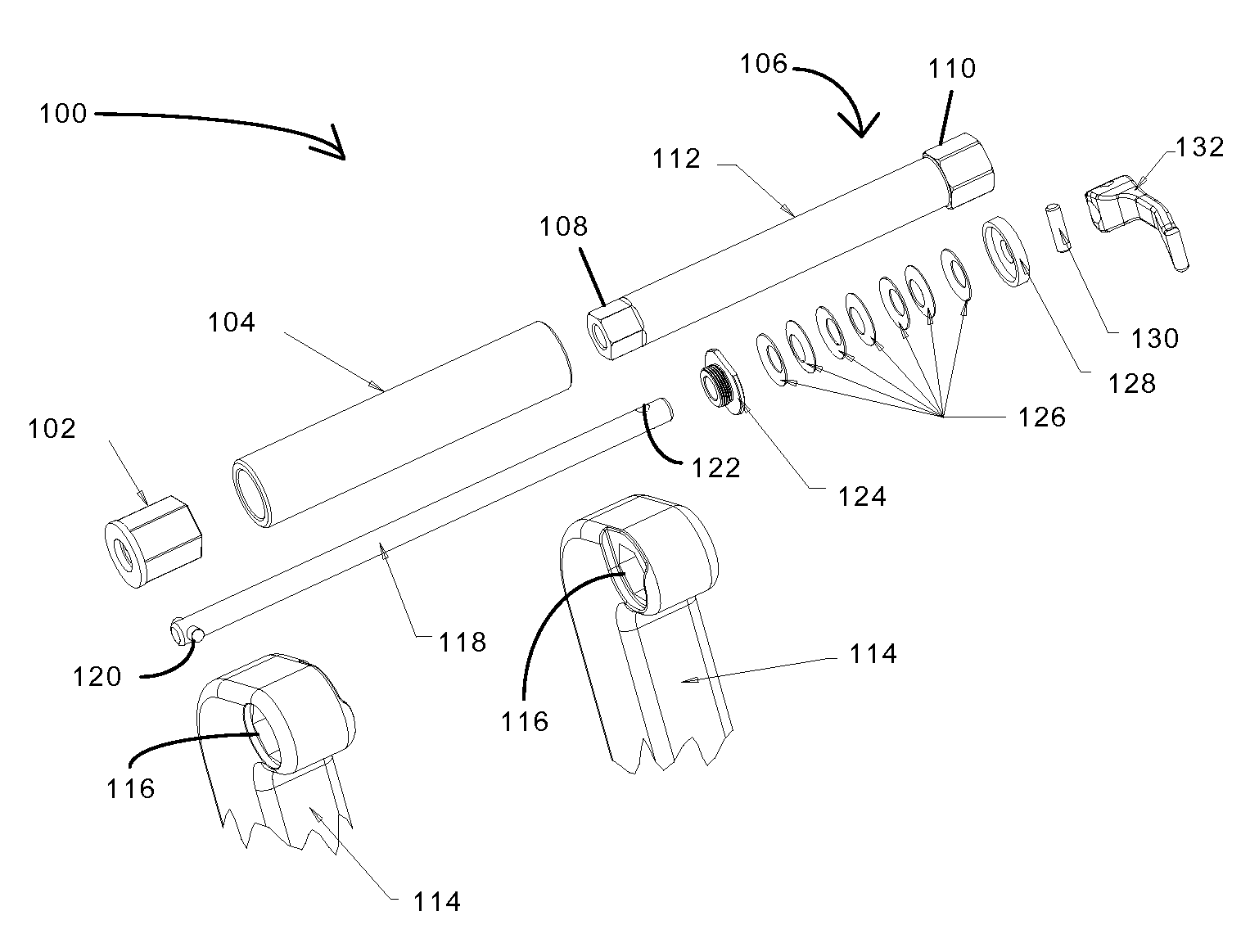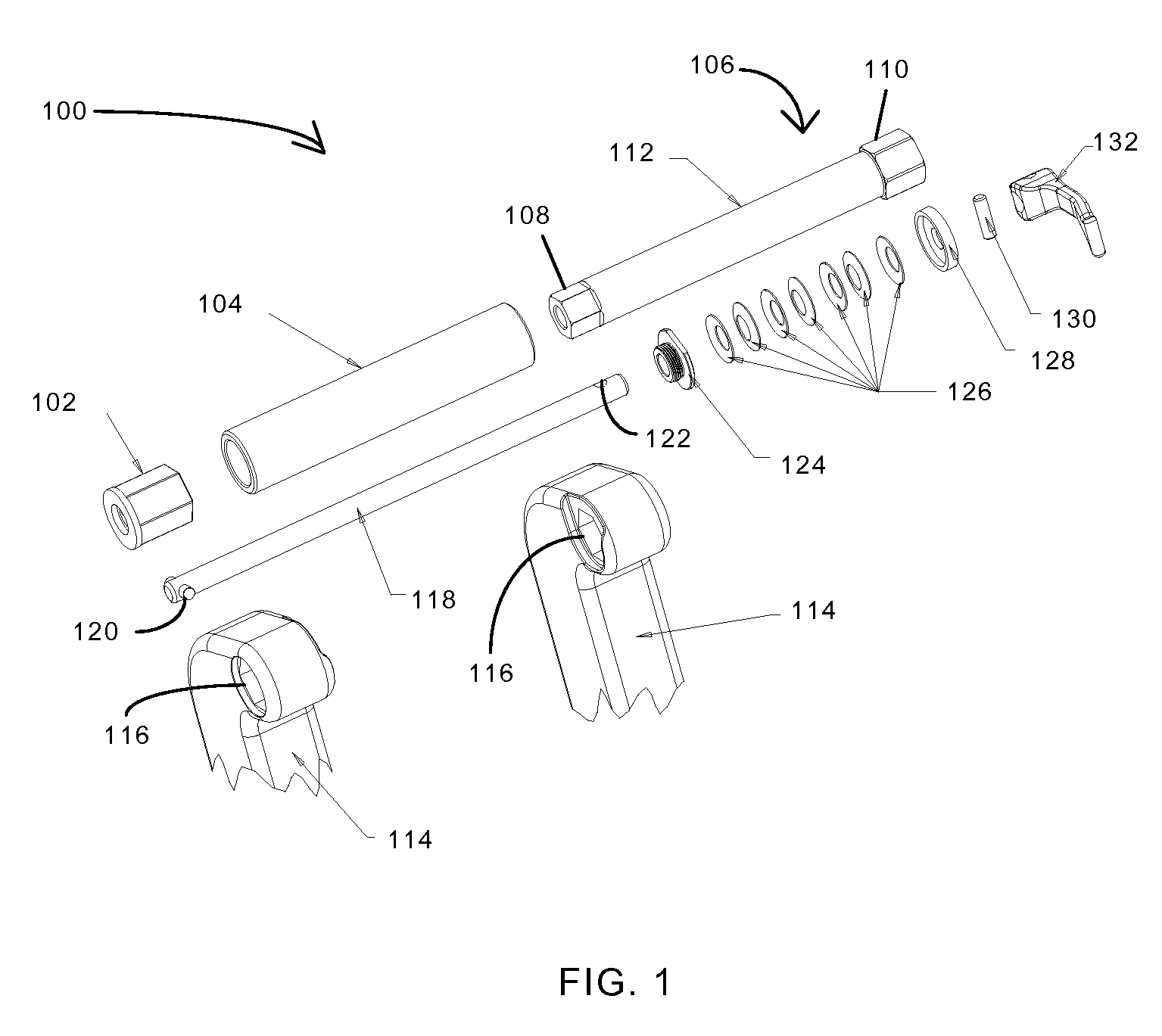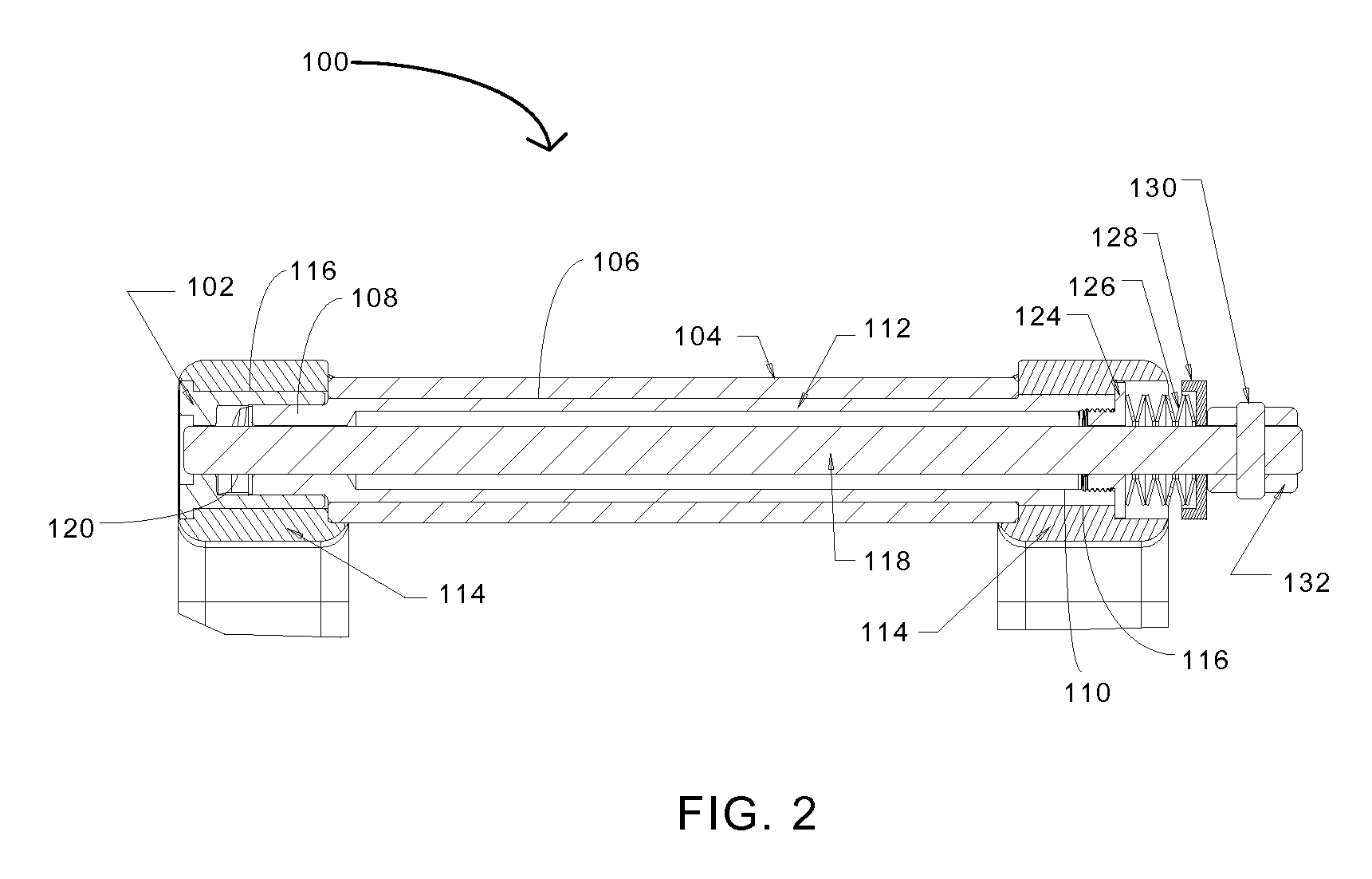Apparatus for twist-to-lock retention of a wheel
a technology of twist-to-lock and apparatus, which is applied in the direction of release mechanisms, cycle equipment, steering devices, etc., can solve the problems of operator readingjusting the quick-release system, component wear concerns, and almost tightening the skewer for
- Summary
- Abstract
- Description
- Claims
- Application Information
AI Technical Summary
Benefits of technology
Problems solved by technology
Method used
Image
Examples
Embodiment Construction
A system is shown that provides a quick-release configuration for a wheel, preferably a bicycle wheel. The quick-release configuration uses a twist-to-lock action on a shaft to secure the wheel to a bicycle fork or frame.
FIG. 1 illustrates an exploded view of an exemplary embodiment of the invention. Quick-release system 100 comprises an insert 102 having a non-cylindrical outer profile, a hub 104, and an axle 106. While not shown, hub 104 comprises a plurality of bearings therein to enable axle 106 to rotate freely when axle 106 is received through a central axis of hub 104. Hub 104 may also be configured to include a plurality of openings to accept wheel spokes therein. Axle 106 is shown having respective non-cylindrical end portions 108, 110 and a cylindrical central portion 112. The diameter of non-cylindrical end portion 110 is larger than that of non-cylindrical end portion 108 and cylindrical central portion 112. In this way, axle 106 is sized to pass through a central axis o...
PUM
 Login to View More
Login to View More Abstract
Description
Claims
Application Information
 Login to View More
Login to View More - R&D
- Intellectual Property
- Life Sciences
- Materials
- Tech Scout
- Unparalleled Data Quality
- Higher Quality Content
- 60% Fewer Hallucinations
Browse by: Latest US Patents, China's latest patents, Technical Efficacy Thesaurus, Application Domain, Technology Topic, Popular Technical Reports.
© 2025 PatSnap. All rights reserved.Legal|Privacy policy|Modern Slavery Act Transparency Statement|Sitemap|About US| Contact US: help@patsnap.com



